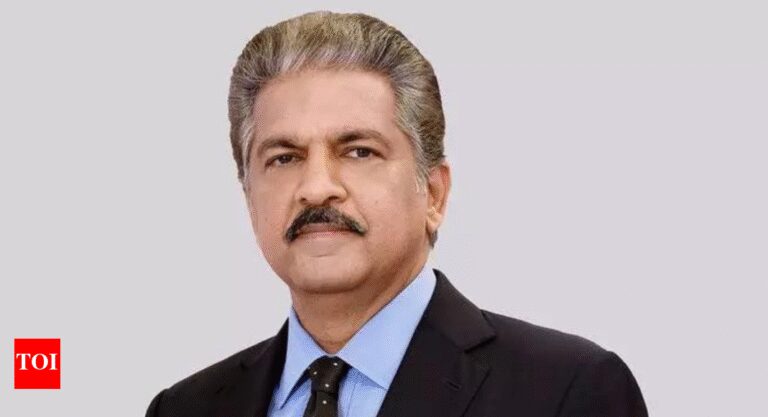(Bloomberg) — Russia is taking another crack at expanding exports of liquefied natural gas after US sanctions stalled efforts last year.
An LNG vessel has docked at the Arctic LNG 2 export facility for the first time since October, according to ship-tracking data compiled by Bloomberg and satellite images. The facility was supposed to be a cornerstone of Moscow’s goal to increase LNG exports threefold by 2030, but has been idle for months after struggling to find buyers willing to break western restrictions.
Russia has the pieces in place to meaningfully boost LNG exports as it expands its shadow fleet. Since the 2022 invasion of Ukraine, Russian gas pipeline exports to Europe have dwindled, and shipping more fuel via seaborne LNG tankers provides an attractive revenue stream to fill Moscow’s coffers.
At least 13 ships, including those that can navigate icy waters, have been marshaled to potentially service Arctic LNG 2, with some changing management companies several times to help obfuscate the actual owners. According to ship-tracking data compiled by Bloomberg they include:
“Russia does have more vessels at its disposal compared to the summer/fall of 2024,” Malte Humpert, founder of the Arctic Institute, a Washington-based think-tank, said in an email. “If it can find buyers, this small fleet should be sufficient to lift cargoes.”
Eight shipments were exported from Arctic LNG 2 between August and October 2024, but never docked on foreign shores. Instead, the gas was offloaded into two Russian storage units in the Barents Sea and its Far East region. Large-scale production halted in October after ice built up around the facility and made transport by traditional vessels challenging.
Russia’s first domestically built ice-class LNG tanker may come online in the second half of this year if it passes remaining sea trials, Interfax reported Wednesday, citing Sovcomflot Chief Executive Officer Igor Tonkovidov.
Now, the market will be closely monitoring whether Arctic LNG 2 can find willing buyers. Exporting more would be a boon for consumers, as it would put pressure on global gas prices.
The Biden administration was diligent in sanctioning ships and companies connected with exporting fuel from Arctic LNG 2 last year. It isn’t clear if the Trump administration will be as strict, or if the government will slap restrictions on ports that accept the fuel. The threat of retaliation from the US kept buyers at bay last year.
Officials related to the Arctic LNG 2 joint venture have never stopped trying to sell the fuel, traveling to potential buyers in India and China over the last year, according to traders with knowledge of the matter. However, it isn’t clear if they have been able to secure any sales.
“The biggest obstacle remains finding a buyer and shipping capacity,” Jan-Eric Fahnrich, a senior analyst at Rystad Energy, said by email. “They will then circle around looking for buyers in Asia and Novatek will offer a discount.”
Majority shareholder Novatek PJSC and the operating venture Arctic LNG 2 did not respond to emails seeking comment.
Iris, the tanker currently docked at Arctic LNG 2, is a so-called Arc4 vessel, with a reinforced hull that allows it to navigate the shorter Arctic route to Asia when conditions allow in the summer. It is likely that the ship will make the journey, as Asia is home to buyers who may be willing to circumvent western restrictions.
“China would appear to be the most likely candidate, but with consistently declining Chinese demand for the past eight months this won’t be an easy task,” said the Arctic Institute’s Humpert. “The fact that more than one million cubic meters of LNG loaded last year remains unsold, and in floating storage, does not bode well for renewed attempts to market additional volumes this summer.”
Loading vessels at Arctic LNG 2 could also be necessary to ease brimming gas tanks. Satellite images taken June 25 indicate that two production trains at the facility are flaring, which indicates they could be operating or cooling down equipment. Without steady exports, the plant’s storage will quickly fill up, and lack of space was one of the reasons why Arctic LNG 2 stopped large-scale production in October.
Meanwhile, traders will wait to see if US or European officials further tighten restrictions on the facility as exports resume.
“Now is the time for increased pressure” on Russia’s energy revenues, said Geoffrey Pyatt, distinguished fellow at the Atlantic Council Global Energy Center and a former US assistant secretary of state who helped craft Arctic LNG 2 sanctions under the Biden administration. “European leaders have expressed new determination to end all imports of Russian gas, making it even more important that the United States maintains our pressure on Novatek.”
–With assistance from Anna Shiryaevskaya.
More stories like this are available on bloomberg.com




